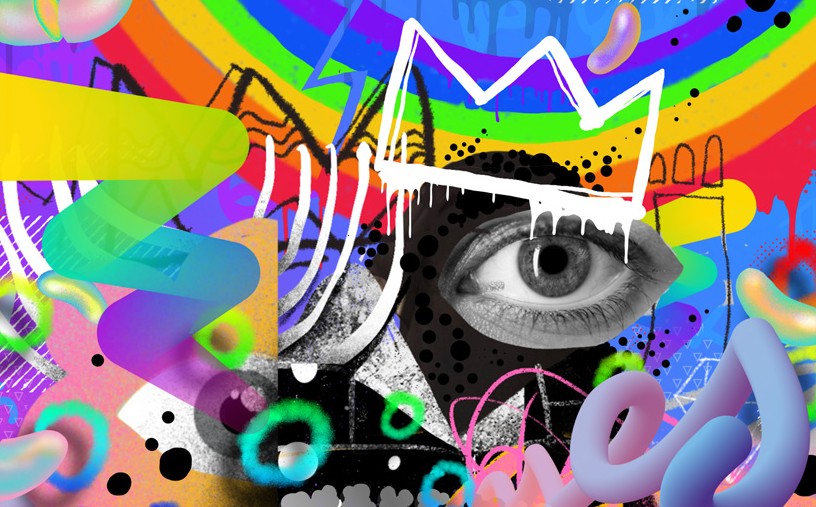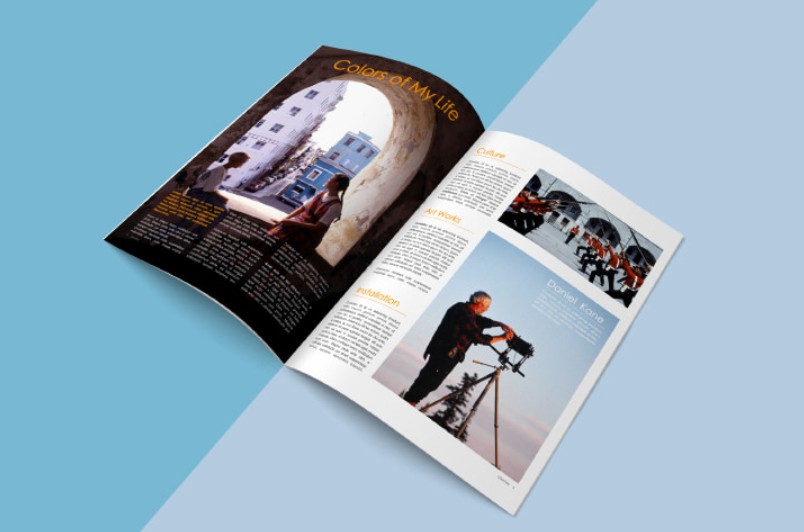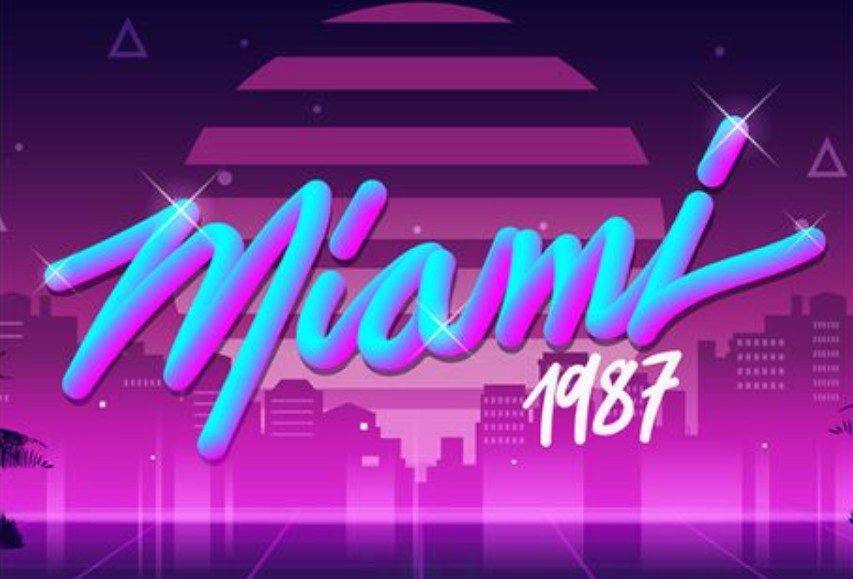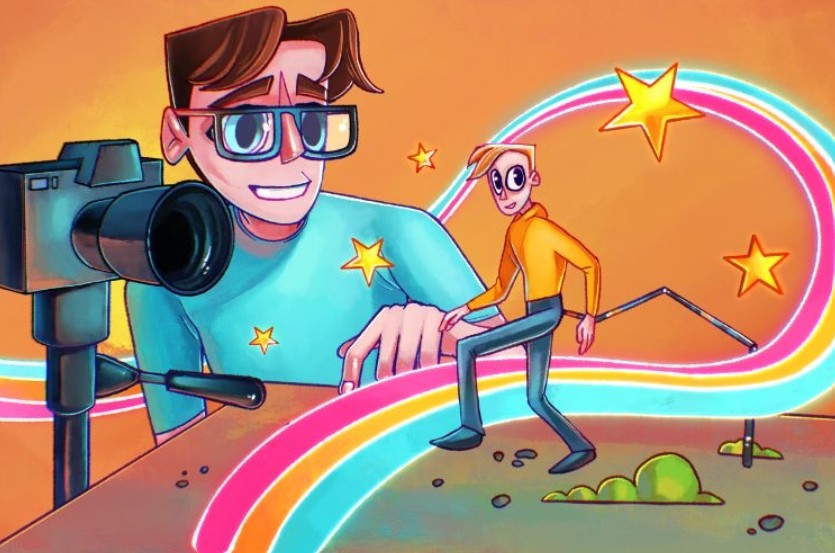Best Selling Products
Entering the World of Digital Art: Digital Art and What You Don't Know
Nội dung
- 1. Definition of Digital Art
- 2. What are the advantages and disadvantages of Digital Art?
- 2.1. Advantages of Digital Art
- 2.2. Disadvantages of Digital Art
- 3. Main forms in Digital Art
- 3.1. Digital Painting
- 3.2. 3D Art
- 3.3. Photography and editing
- 3.4. Mixed Media and Collage
- 4. Digital Art in the Modern Age
- 4.1. Application of Digital Art in design and advertising
- 4.2. Digital Art in the game and film industry
- 4.3. Digital printing and NFT
- 4.4. Application of Digital Art in education and communication
- 5. Things you should know when doing Digital Art
From brushes to electronic tablets, from paper to screens – art is changing every day. Digital Art is not just a trend but a revolution in creativity.

Since the Internet and mobile devices became popular, human creativity has expanded in countless directions. Digital Art has emerged as a “new wind” with a strong modern character, not limited by the physical boundaries of tradition. Today’s artists do not need to rely on pens, paint brushes or paper surfaces to express their creative ideas. With the help of computers, digital drawing boards and specialized graphics software, they can create diverse and rich works with sophisticated and breakthrough colors and details. Through this article, SaDesign hopes to help you have an overview of Digital Art to help you easily apply it to your creative work or simply explore your passion for art.
1. Definition of Digital Art
Digital Art is a term used to refer to works of art created or edited using digital technology. This includes the use of tools and software such as Adobe Photoshop, Illustrator, Corel Painter, Procreate... to draw, edit and create digital images and paintings. Unlike traditional art, Digital Art allows artists to work on digital software, creating unlimited effects and editing capabilities, helping them easily turn ideas into reality with high accuracy.
When it comes to Digital Art, we don’t just mean static paintings, but also multimedia works such as 3D Art, digital animation, photo editing and even interactive art projects. This not only expands the scope of creativity but also creates unique art forms that are convenient for storage, sharing and consumption on digital platforms.
.png)
2. What are the advantages and disadvantages of Digital Art?
2.1. Advantages of Digital Art
Stunning Colors: Digital Art is seen by emission, not reflection. Its colors are created directly and do not need to be reflected by a light source onto the object. Therefore, you will be able to see all the colors in excellent quality regardless of the lighting conditions and time.
Endless creativity: Digital Art is not exactly drawing but it is displayed and you can replace it with ways to display what you want. Digital Art has a prominent advantage that you can erase everything without leaving a trace, and at the same time you can control your working process.
Save time and effort: When you have all the basic tools such as graphics software and a computer, you will have all the colors you want, without worrying about running out of paper and paint, and you will never have to think about replacing worn-out brushes or almost used-up pencils. With Digital, you can completely experiment with new techniques without spending too much time looking for art supplies.
Easy to Protect and Share: Since these are digital works of art, your work cannot be easily destroyed. Since you have a backup, you will not have to worry about it being damaged by sunlight or moisture over the years. The colors will never fade and you will never have to worry about paper tearing. Furthermore, digital art is easy to share. Anyone in the world can see your work as long as they have an internet connection.
.png)
Easy to produce: Digital Art is very convenient and easy to produce. Whenever you want to create, you just need to open your computer, turn on the application and you will be able to unleash your creativity. When you are done working, you just need to turn off the computer and fold it. It does not take too much time and especially does not need to clean anything. And best of all, you do not have to wait for the first layer of color to dry before you can continue.
2.2. Disadvantages of Digital Art
Expensive: If you want to become a Digital Art you will have to spend a lot of money to invest in devices like Wacom, computers and many other devices.
Colors are not as expected: Because the colors you see will depend on the quality of your computer. A good computer screen will produce good quality photos.
Easy to copy: Because it is a digital product, it is also easier to copy. Digital Art does not have any ownership value, so it is also easier to steal ideas. There are many people who have made money from printing products that they did not create.
Prone to problems: Since the works are drawn on the computer, there is a high chance of losing them due to data errors or computer errors. These problems are something we cannot avoid when using Digital Art.
.png)
Lack of artistic feeling: The products are formatted in digital technology so the artist cannot touch them but can only touch the computer screen. However, the process of creating digital paintings is also very monotonous because there is no sound, no smell and no other supporting tools.
3. Main forms in Digital Art
3.1. Digital Painting
Digital Painting is the process of drawing directly on graphic software. Unlike traditional painting, Digital Painting allows artists to create multiple layers of color, apply blending and masking effects and edit colors easily.
3.2. 3D Art
3D Art or three-dimensional art is gradually becoming a dominant trend, especially in the fields of games, animation and product design.
Popular software: Blender, Autodesk Maya, 3ds Max…
.png)
Application
Character and environment modeling for video games.
Create animations and virtual reality simulations.
Produce models for advertising and product design.
3.3. Photography and editing
With the explosion of digital cameras and smartphones, digital photography has become an integral part of Digital Art. Photo editing techniques such as retouching, color grading, and manipulation help turn ordinary photos into unique works of art.
Software: Adobe Lightroom, Photoshop,…
Technique:
Retouching to remove unwanted elements.
Combine multiple images to create new contexts and effects.
3.4. Mixed Media and Collage
Mixed Media is a way for Digital Art artists to limit their creativity. Digital Collage allows the combination of graphic elements and images from many different sources, creating a multi-dimensional and meaningful work.
.png)
Commonly used tools and software
One of the factors that make Digital Art successful is the supporting tools. From powerful computers to devices such as graphics tablets and pen displays, all contribute to a seamless and professional creative experience.
Graphics software:
Adobe Photoshop & Illustrator: Considered the “golden toolkit” for professional artists and designers, allowing for high-precision image and vector manipulation.
Corel Painter: Simulates the traditional hand-drawn feel, perfect for those who enjoy Digital Painting.
Procreate: A powerful iPad app that helps you create works quickly with a friendly interface
Blender: A complete solution for 3D Art, from modeling, scene building to animation.
Supported devices:
Graphics Tablets: Brands like Wacom, Huion are always in the eyes of artists for their precision and natural touch.
Pen Display: Helps to directly display drawings on the screen, increasing the interactivity and authenticity of the work.
4. Digital Art in the Modern Age
The intersection of art and technology has brought about a huge leap forward in the way we understand and enjoy art. Digital Art is not only a creative form but also a powerful communication tool, opening up many applications in different fields.
.png)
4.1. Application of Digital Art in design and advertising
In the context of fierce competition in today's market, image and design become decisive factors in a business's marketing strategy.
Graphic design:
Digital Art allows for the creation of unique, highly recognizable brand images.
From logos, banners, to promotional materials, digital assets can be easily customized to suit campaign needs.
Online advertising:
Digital media campaigns use Digital Art to capture customer attention across social media and online platforms.
Videos, infographics, and interactive images designed with digital trends make content vivid and memorable.
4.2. Digital Art in the game and film industry
The gaming and film industries are areas that cannot be without the impact of digital art.
Character and environment design:
Game characters today are created with high detail thanks to 3D Art and Digital Painting techniques.
The living environment, natural landscape or virtual city are all meticulously designed, bringing a realistic experience to players.
.png)
Animation and special effects:
Digital Art allows the creation of special effects that are difficult to reproduce using traditional methods.
Animation and motion graphics techniques combined with CGI technology have brought audiences the ultimate cinematic experience.
4.3. Digital printing and NFT
The explosion of blockchain technology has created a new model for digital art through NFTs – Non-Fungible Tokens.
Digital printing:
With digital technology, artworks not only exist in digital file form but can also be printed in high quality, meeting the needs of the modern market.
NFTs and the digital art market:
NFTs help protect artists' copyrights and provide a transparent and secure trading channel.
Many famous Digital Art works have been sold for huge sums, opening up new career opportunities for young artists and creative enthusiasts.
4.4. Application of Digital Art in education and communication
In addition to commercial fields, Digital Art also plays an important role in education and communication.
.png)
Education:
Online courses on Digital Art help students from basic to advanced level to approach new techniques and creative styles.
Many universities and art training centers have integrated digital art programs, expanding students' knowledge and skills.
Media:
Digital Art works increase the value of media content, helping to convey messages in a more intuitive and engaging way.
Using Digital Art in articles, blogs and media campaigns helps to differentiate and make a strong impression on the audience.
5. Things you should know when doing Digital Art
While Digital Art offers many opportunities and advantages, it is not without its challenges. To help you get off to a good start and build a successful path in digital art, here are some tips:
Technical and Time Requirement: Digital Art requires a basic understanding of software and equipment. Not everyone can master it immediately because:
Digitalization requires a learning curve: Getting familiar with the software interface, tools, and how to use them effectively requires patience and constant practice.
Computer and device configuration requirements: To work smoothly, you need to invest in a computer with a strong enough configuration and specialized support devices such as a graphics tablet.
Digital Art will continue to evolve and reshape the way we interact with art and technology. The advent of new technologies such as AR, VR, AI and blockchain will create new opportunities for digital artists. This will not only open up new directions for the art industry but also promote innovative business models, where art is not only an inspiration but also a sustainable source of income.












































